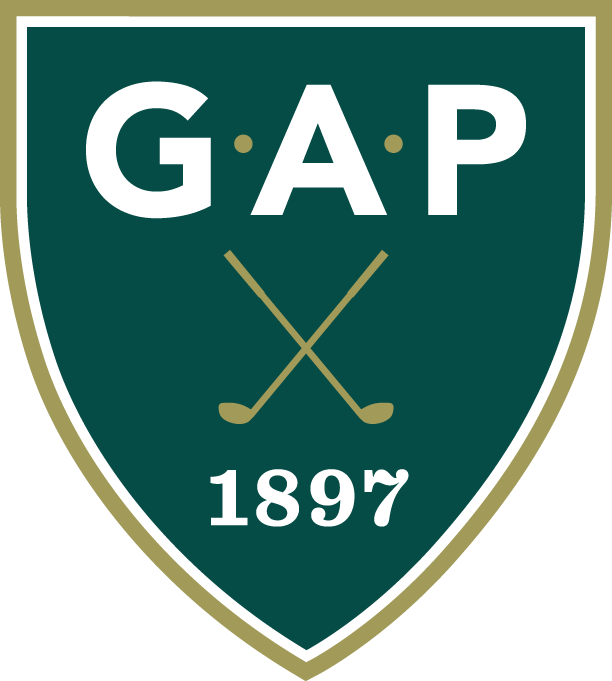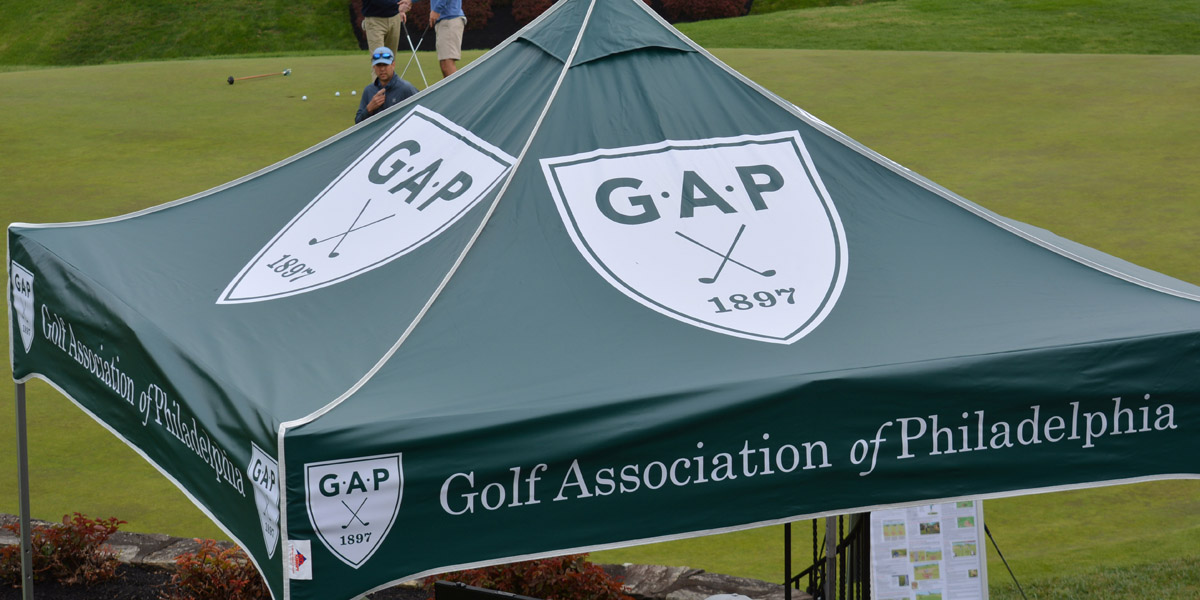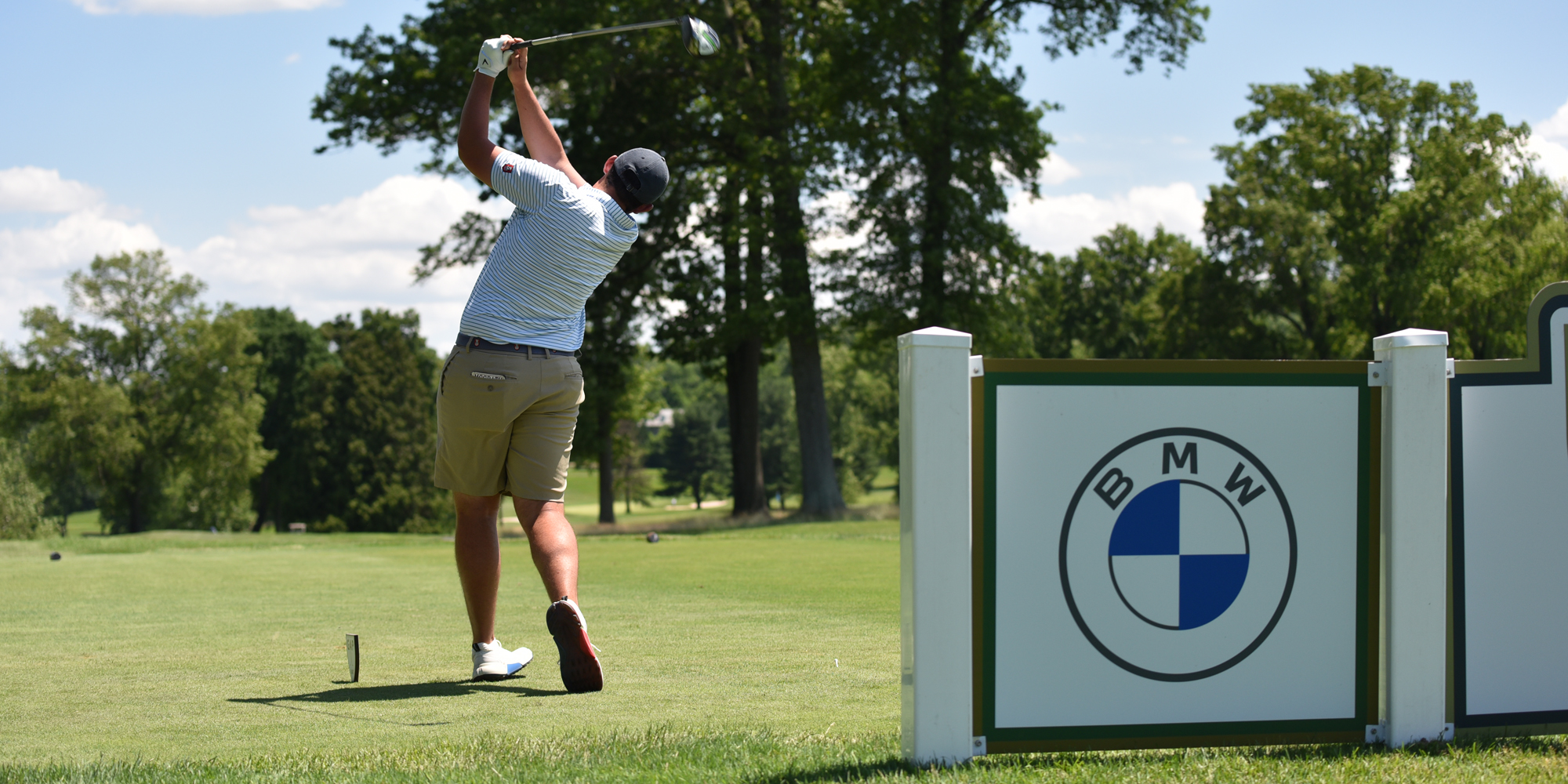| *There was a technical issue with the answer key to this month's
rules quiz. This is a reprint of the questions with the correct answer key.
The Golf Association of Philadelphia apologizes for any inconvenience.
Rules Quiz for PGM March 2005 Issue
1. Dan removes the flagstick from the hole for his fellow competitor, Bill, and places it on the ground. After Bill putts, Dan, who is standing within reach of the removed flagstick, realizes that Bill’s ball might strike the removed flagstick, so he picks the flagstick up. What is the ruling?
- Dan incurs a penalty of two strokes.
- Bill incurs a penalty of two strokes.
- Dan incurs a loss of hole.
- There is no penalty for either player.
2. In match play, Neil holed out and stated to Craig, his opponent, that he had scored a 4. Craig, having played four strokes, picked up assuming he had lost the hole. Neil then realized that he had scored a 5. He immediately told Craig. What is the ruling?
- The hole stands as played. Craig concedes the hole to Neil.
- Neil incurs a loss of hole penalty for giving wrong information.
- The hole is halved.
- Neil is disqualified from the competition.
3. During the Patterson Cup the head of Terry’s driver caves in while smashing a tee shot on the fifth hole. Which of the following is false?
- He may use the club in its damaged state for the remainder of the stipulated round.
- He may borrow a club from another player on the course.
- He may, without unduly delaying play, repair it or have it repaired.
- He may replace the club with any other club, as long as it does not unduly delay play.
4. Chris takes his stance in the rough and places his club on the ground, only seconds later the ball moves before he begins his swing. What must the player do?
- He may play the ball as is because the ball moved while addressing it.
- He incurs a penalty of one stroke.
- He incurs a penalty of two stokes and must play it as is.
- He incurs a penalty of one stroke and must replace the ball.
5. Scott marks his ball on the green, cleans it and replaces. He then walks to the other side of the hole to line up his putt. While walking back to the ball, it rolls three-feet further from the hole. Scott picks the ball up and replaces it to the original spot and holes the putt. What is the ruling?
- He proceeded correctly.
- He incurs one penalty stroke.
- He incurs two penalty strokes.
- He is disqualified for a serious breach of the rules.
6. Which area is through the green?
- The teeing ground, fairway, hazards, out of bounds, and the green of the hole being played.
- The whole area of the course except out of bounds.
- The whole area of the course except the teeing ground.
- The whole area of the course except the teeing ground and green of the hole being played and all hazards on the course.
7. Bob’s ball lies on the fringe. With putter in hand, Bob plans to putt the ball toward the hole but a large puddle intervenes between his ball and the hole. Is the player entitled to relief?
- Yes, Bob may drop his ball at the nearest point of relief where the casual water does not interfere with his line of putt. That point may be on the green.
- Yes, Bob may drop his ball at the nearest point of relief where the casual water does not interfere with his line of putt. That point may not be on the green.
- No, Bob MUST play the ball over the puddle or through it.
8. During the Junior Boys’ Championship final match, James found his ball in the greenside bunker on the third hole. After stepping into the bunker he noticed there was a water bottle a foot in front of his ball on his line of play. James removed the bottle and played his shot onto the green. Is there a penalty?
- He incurs a one-stroke penalty.
- He incurs a two-stroke penalty.
- He incurs a loss of hole penalty.
- No penalty.
9. Stan, while playing in a rain soaked Warner Cup, announces to John, his fellow competitor, that his ball may be unfit for play. Stan lifts ball and both players determine that the ball is not unfit for play. Stan cleans it, replaces his ball and plays the ball toward the green. What is the ruling?
- Stan incurs no penalty.
- Stan incurs a one-stroke penalty.
- Stan incurs a two-stroke penalty.
- Stan incurs a loss of hole.
10. In their first-round match of the Golf Association of Philadelphia Amateur Championship, Mike, after playing his ball from the bunker, marks his ball and places his pitching wedge and putter on the green. Then Dave, who is furthest away from the hole, hits his putt while Mike is raking the bunker. Seeing that Dave’s ball might hit his clubs, Mike runs over and picks up his clubs so that the ball doesn’t hit them. What is the ruling?
- Mike incurs a loss of hole penalty.
- Dave incurs a penalty of two strokes.
- Mike incurs a penalty of two strokes.
- There is no penalty for either player.
11. Jack plays his tee shot on the third hole in front of the tee markers, the ball goes out of bounds. Frank, his opponent, does not recall the shot. What must Jack do?
- He MUST re-tee from within the tee box, playing his third shot.
- He MUST re-tee from in front of the marker, playing his third shot.
- He MUST drop a ball from where he teed off in front of the markers, playing his third shot.
- Go to the next tee, he lost the hole.
12. Having the honor, Matt hit his tee shot from the par three 16th hole. His fellow competitor Bill asked him, "What did you hit there?" Matt answers, "6-iron." What is the ruling?
- Bill incurs a two-stroke penalty.
- Matt incurs a two-stroke penalty.
- Both players incur a two-stroke penalty.
- There are no penalties.
13. Tim, while playing in the Spring Net Championship, noticed that his handicap on the scorecard was 10, while his handicap was actually 5 as of the last revision. Thinking the committee just made a mistake, Tim played the round, signed his scorecard, turned it in at the scoring tent and went in to have lunch.
- Tim incurs a penalty of two strokes for every hole from which he played by the wrong handicap. At a maximum of four strokes.
- The score returned should be allowed as is.
- The committee should correct the mistake on the scorecard.
- Tim should be disqualified
14. In a four-ball match, Jim asks his partner, Steve, to show him the line for a chip shot from just off the green. Steve indicates the line of play by touching the green with his club, then moves away. Which of the following is the appropriate ruling?
- Jim incurs no penalty.
- Jim is disqualified for the hole.
- Steve is disqualified for the hole.
- Jim and Steve lose the hole.
15. Mike’s tee shot lands in the fairway bunker. From there Mike plays a ball from the bunker onto the putting green and three putts. Taking the ball from the hole, he notices that the ball is not his. Mike goes back to the bunker, finds his original, hits it short of the green. He chips onto the green and makes the putt. What is his score?
- 4
- 5
- 6
- 7
16. Jeff's ball lies on the putting green. Rick plays his shot from the fairway, which hits Jeff's ball on the putting green. Jeff's ball is deflected into the hole while Rick's ball comes to rest 10 feet from the hole. What's the ruling?
- Rick must play the ball as it lies and is penalized two strokes, while Jeff must replace his ball to its previous position on the putting green.
- Jeff must replace his ball to its previous position on the putting green and Rick must play his ball as it lies.
- Jeff is deemed to have holed out on his last shot and Rick must replay his shot.
- Jeff must play his ball at its previous position on the putting green and Rick must replay his shot.
17. Which of the following is a substituted ball?
- The ball that is properly dropped under the "Obstruction" Rule (24-2b).
- A ball that is not found after a five-minute search.
- A ball dropped under the "Water Hazard" Rule (26-1).
- An abandoned ball found in the rough and played onto the putting green.
18. In match play, a player accidentally moves his ball while searching for it in ground under repair. The player:
- incurs a one-stroke penalty, and MUST replace the ball.
- incurs a one-stroke penalty, and may play the ball as it lies from its new location.
- incurs no penalty, but MUST replace the ball and then decide whether to invoke the ground under repair Rule.
- Incurs no penalty, but must EITHER replace the ball or invoke the abnormal ground condition Rule.
Bonus
Marty, believing that his tee shot is lying very badly in a greenside bunker, deems it unplayable, drops it in the bunker within two club lengths, not nearer the hole and plays it out. He then discovers the ball he played is not his original ball. He goes back to the bunker and finds his original ball in the bunker not far from where he played the dropped ball. Which of the following is correct?
- No penalty, Marty MUST complete play of the hole with his original ball.
- Marty incurs a one-stroke penalty and MUST complete play of the hole with the dropped ball.
- Marty incurs a penalty of three strokes and MUST complete play of the hole with the original ball
- Marty MUST return to the teeing ground where he will be playing his 5th stroke.
Answer Sheet
- A Decision 17-1/7
- C Decision 9-2/6
- B Rule 4-3
- D Rule 18-2b
- C Decision 18-2a/7
- D Definition of "Through the green"
- C Decision 25-1a/2
- D Rule 24-1
- B Rule 5-3
- D Rule 24-1
- C Rule 11-4
- C Rule 8
- D Decision 6-2b/2
- A Rule 8-2a
- C Rule 15-3b
- B Rule 19-5
- C Definition of "Substituted Ball"
- D Rule 12-1
BONUS: D Decision 15/14 |


